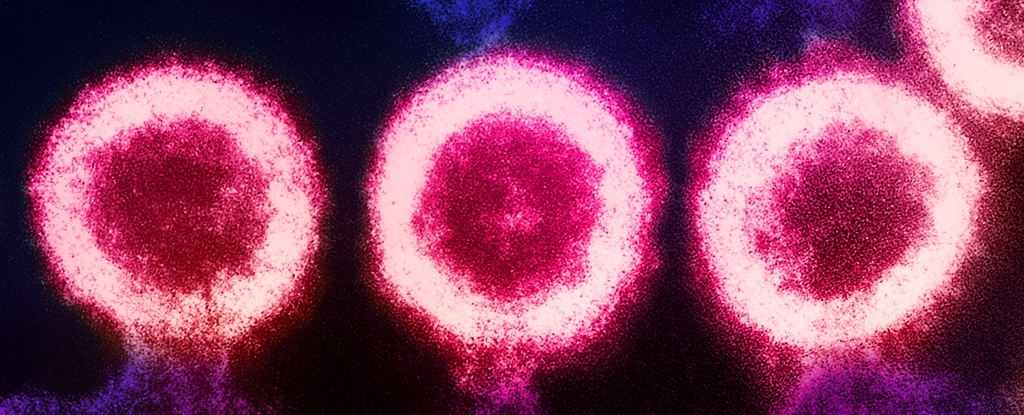ΣΧΟΛΙΟ ΙΣΤΟΛΟΓΙΟΥ : Στο κάτωθεν άρθρο μας λένε ότι αρχαίοι ιοί πριν από εκατομμύρια χρόνια διαμόρφωσαν τα σώματα που έχουμε σήμερα. Γιατί ωρέ κλεφτόπουλα λέτε μπούρδες;; Τα σώματα που έχουμε σήμερα ΔΕΝ διαμορφώθηκαν από ιούς...αλλά από τον Ήλιο και τις Ουράνιες Ροές του Αιθέρα (της Αθηνούλας) που επέδρασαν επάνω στα ανθρώπινα σώματα. Κάποτε οι άνθρωποι είχαν ακόμα ένα δάχτυλο, που με τον καιρό έπεσε και χάθηκε...όταν έπεσε και χάθηκε ο προηγούμενος Ήλιος. Και κάποτε στην Χρυσή Εποχή οι άνθρωποι είχαν 7 δάχτυλα.!! Όσοι ακριβώς ήταν και οι Ήλιοι. Εφτά Ήλιοι όσα και τα ενεργειακά κέντρα στο ανθρώπινο σώμα. Τόσους Ήλιους έχει και το δικό μας Σύμπαν. Ανάβουν και σβήνουν ανάλογα με τις ΡΟΕΣ του Αιθέρα. Ο Αιθέρας (η Αθηνούλα) έχει άμμεση σχέση με τον ΖΕΥ...δηλαδή τον Ήλιο. Και μην ξεχνάμε ότι ξεπετάχτηκε απο το "κεφάλι" του πατέρα της (του ήλιου) κατόπιν βοήθειας του Ηφαίστου (ΠΥΡ) . Ο Ήλιος δεν διαμορφώνει μόνο τα ανθρώπινα σώματα ...αλλά και τους πλανήτες.
Ancient viruses that infected vertebrates hundreds of millions of years ago played a pivotal role in the evolution of our advanced brains and large bodies, a study said Thursday.
The research, published in the journal Cell, examined the origins of myelin, an insulating layer of fatty tissue that forms around nerves and allows electrical impulses to travel faster.
According to the authors, a gene sequence acquired from retroviruses – viruses that invade their host's DNA – is crucial for myelin production, and that code is now found in modern mammals, amphibians and fish.
"The thing I find the most remarkable is that all of the diversity of modern vertebrates that we know of, and the size they've achieved: elephants, giraffes, anacondas, bullfrogs, condors wouldn't have happened," senior author and neuroscientist Robin Franklin of Altos Labs-Cambridge Institute of Science told AFP.
A team led by Tanay Ghosh, a computational biologist and geneticist in Franklin's lab, trawled through genome databases to try to discover the genetics that were likely associated with the cells that produce myelin.
Specifically, he was interested in exploring mysterious "noncoding regions" of the genome that have no obvious function and were once dismissed as junk, but are now recognized as having evolutionary importance.
Ghosh's search landed upon a particular sequence derived from an endogenous retrovirus, long lurking in our genes, which the team dubbed "RetroMyelin."
To test their finding, researchers carried out experiments in which they knocked down the RetroMyelin sequence in rat cells, and found they no longer produced a basic protein required for myelin formation.
Faster reactions, bigger bodies
Next, they searched for RetroMyelin-like sequences in the genomes of other species, finding similar code in jawed vertebrates – fellow mammals, birds, fish, reptiles and amphibians – but not in jawless vertebrates or invertebrates.
This led them to believe the sequence appeared in the tree of life around the same time as jaws, which first evolved around 360 million years ago in the Devonian period, called the Age of Fishes.
"There's always been an evolutionary pressure to make nerve fibers conduct electrical impulses quicker," said Franklin. "If they do that quicker, then you can act quicker," he added, which is useful for both predators trying to catch things, and prey trying to flee.
Myelin enables rapid impulse conduction without widening the diameter of nerve cells, allowing them to be packed closer together.
It also provides structural support, meaning nerves can grow longer, allowing for longer limbs.
In myelin's absence, invertebrates have found other ways to transmit signals faster – giant squids for example have evolved wider nerve cells.
Finally, the team wanted to learn whether the retroviral infection happened once, to a single ancestor species, or whether it happened more than once.
They used computational methods to analyze the RetroMyelin sequences of 22 jawed vertebrate species, finding the sequences were more similar within than between species, which suggested multiple waves of infection.
More discoveries await?
"One tends to think of viruses as pathogens, or disease causing agents," said Franklin.
But the reality is more complicated, he said: at various points in history retroviruses have entered genomes and integrated themselves into species' reproductive cells, allowing them to be passed down to future generations.
One of the most well known examples is the placenta – one of the defining characteristics of most mammals – which we acquired from a pathogen embedded in our genome in the deep past – and there probably many more discoveries waiting to be made, said Ghosh.
Brad Zuchero, a neuroscientist at Stanford University not affiliated with the research, said it "fill(s) in a major piece of the puzzle about how myelin came to be during evolution," calling the paper "exciting and insightful."

1 σχόλιο:
Λέγε τα, ελληνόστομε, τοις ανοιχτοκώλοις!
Δημοσίευση σχολίου